#Elizabeth Charlotte of the Palatinate
Text

Elizabeth Charlotte of the Palatinate, Duchess of Orléans (1652-1722). By Pierre Mignard.
#pierre mignard#royaume de france#maison de bourbon#maison d'orléans#bourbon orleans#elizabeth charlotte of the palatinate#duchesse d'orléans#madame palatine#liselotte von der pfalz#house of wittelsbach#german aristocracy#haus wittelsbach#museo del prado
15 notes
·
View notes
Text

“Duchess Elisabeth Charlotte of Orleans was the "daily mail" of her time, her comments and gossip about the courtiers of Versailles were iconic.” - Text & Image Submitted by cenacevedo15
29 notes
·
View notes
Photo
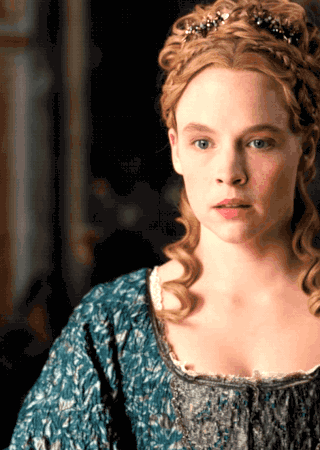

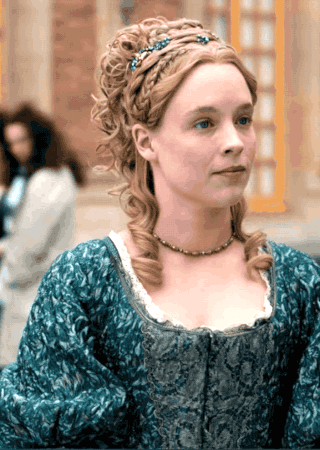
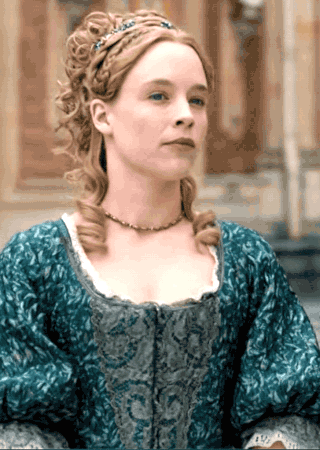
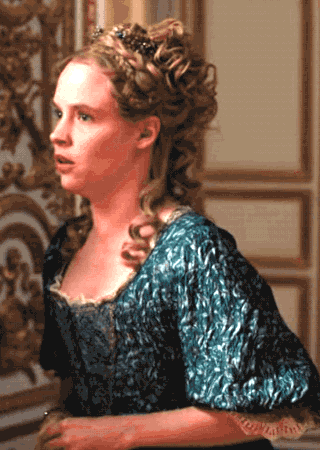




(Almost) Every Costume Per Episode + Princess Elizabeth Charlotte’s blue skirts and blue textured bodice with gold lace stomacher in 3x07,9,10
#Versailles#VersaillesEdit#VersaillesTV#perioddramaedit#weloveperioddrama#period drama#perioddrama#Elizabeth Charlotte#Princess Palatine#Liselotte#The Book of Revelation#The Powder Keg#The Legacy#costumeedit#costumes#costume edit#costume drama#costume set#costume series#Almost Every Costume Per Episode#historical drama#1600s#17th century#jessica clark#Awkward-Sultana
119 notes
·
View notes
Text
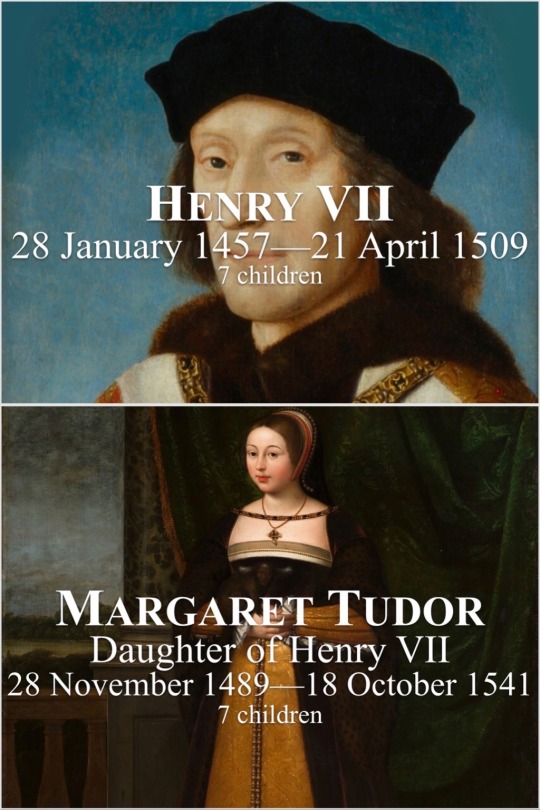





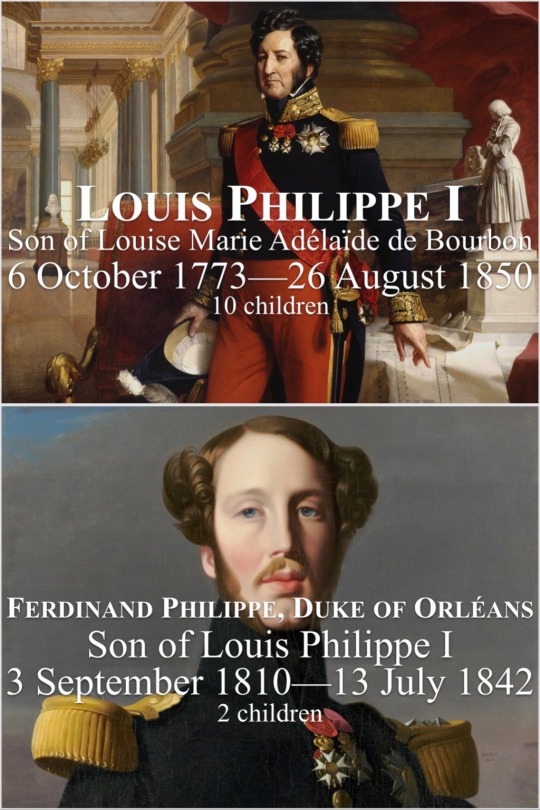

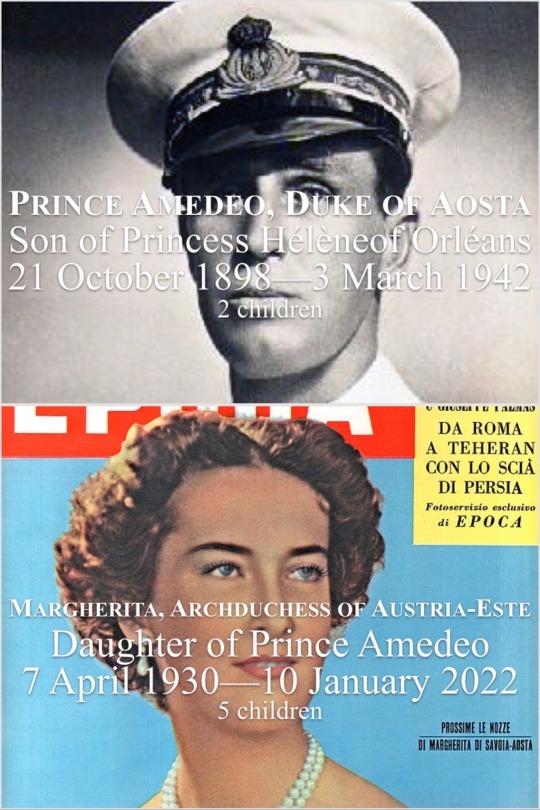

Descendants of the Tudors
#descendants of the tudors#henry vii#margaret tudor#james v#mary queen of scots#james vi and i#elizabeth stuart#charles i louis#elizabeth charlotte madame palatine#philippe ii duke of orléans#charlotte aglaé d’orléans#maria teresa felicitas d’este#louise marie adélaïde de bourbon#louis philippe i#ferdinand philippe duke of orléans#prince philippe count of paris#princess hélène of orléans#prince amedeo duke of aosta#margherita archduchess of austria este#prince lorenz#prince amedeo
5 notes
·
View notes
Text
inspired by @mihrsuri‘s awesome posts:
“While Charles regarded the Prince of Orange and Prince George of Denmark as suitable matches for his nieces, for his daughter and heir a mate was required who would willingly play second fiddle...”
“Princess Elizabeth was given a choice among the younger sons of Ernest Augustus, Elector of Brunswick-Lüneburg and his wife, Sophia of the Palatinate, a granddaughter of James IV and I. Elizabeth chose for her prince the handsomest of the brothers, Maximilian William, a third son three years her elder...” (Charles II and His Daughter Elizabeth II)
“The birth of Princess Elizabeth went a long way towards soothing anti-Catholic fears among the English population, with a Protestant heir standing between the Catholic Duke of York and the throne. The Queen���s position improved immensely..”
“Although her fondness did not extend to her father’s mistresses, the new Queen was inordinately fond of her half-sisters and brothers. Don Carlos accompanied his niece the Princess Royal on the occasion of her marriage to Philippe, Duc de Anjou, later King of Spain...”
“Elizabeth’s closest inner circle included her mother the Queen Mother, uncle the Duke of York, the younger of her surviving cousins the Lady Anne, and her half-sister Charlotte Lee, Countess of Lichfield...” (The Protestant Princess Who Saved England: Elizabeth Stuart and the Protestant Succession)
“Although the match had been set for years, as the time drew near for Max to leave for England, Sophia began to harbor misgivings. Her son was not content as a third son; he had been very pleased to have been chosen over his brothers but how long he would be contented to leave the reins of power in the hands of his wife?” "Max proclaimed himself very happy with his new bride. Elizabeth was not classically beautiful (she had too much of her father in her for that) but she was considered handsome. Max described her in letters to his mother and sister as 'tall and well-formed with dark curly hair and sensual lips'..." "The first clash came when Max, slighted over the Queen's choice of her brother for a honor he believed should have been his, lashed out by showing deliberate and obvious attention to one of his wife's ladies..." "Theirs was a tumultuous marriage but when the couple worked in concert, they could accomplish great things indeed... " "Did Max and Elizabeth feel love for one another? We'll never know for certain but what we do know is that whatever their arguments, they remained physically affectionate throughout their marriage..." (Jolly Prince Max: He Who Would Be King)
“Unlike her father and uncle, Elizabeth, who lacked close family ties to France, pursued a much less conciliatory policy towards France and one that aligned more closely with Parliament’s ...”
“Though the pair later married their eldest surviving daughter to a grandson of Louis XIV, they also married the rest of their offspring with the exception of Princess Charlotte into the other royal families of Europe...” (Politics in the Court of Queen Elizabeth and Prince Max)
8 notes
·
View notes
Photo
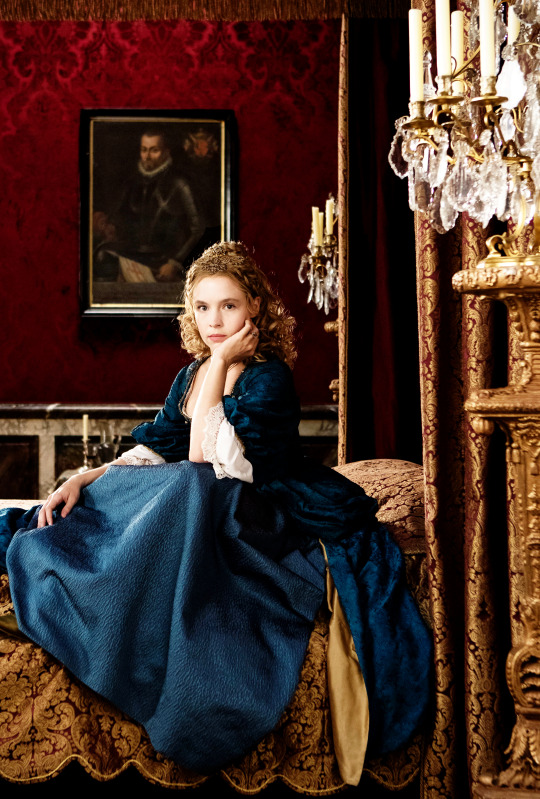
Jessica Clark as Elizabeth Charlotte, Princess Palatine in Versailles (TV Series, 2015-2018).
49 notes
·
View notes
Text






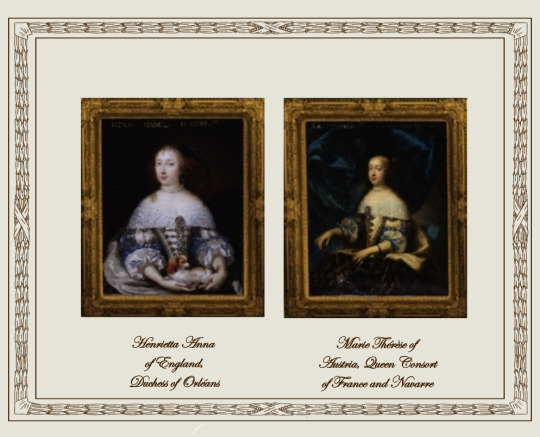
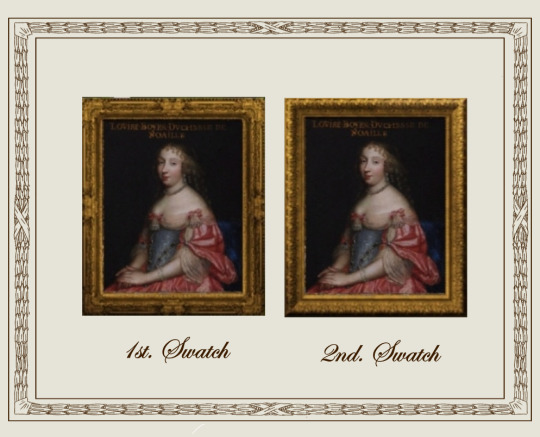
Louis XIV's Gallery of Beauties
A retexture by La Comtesse Zouboff — Original Mesh by @thejim07
This set of 20 portraits was comissioned by the king himself in the 1650s to Charles and Henri Beaubrun (except for a portrait of Henrietta Anna of England, Comissioned to Nicolas Mignard) The portraits comprises the queen, royal princesses and ladies of the court. They hanged at the king's appartments at Versailles. In the 1670s the paintings were progressively relegated to the king's minor residences, but in 1837, Louis-Philippe, King of the French turned Versailles into a museum and rejoined the paintings, in the Louis XIV Rooms, where they remain.
The set includes 20 portraits, with the original frame swatches, fully recolorable. The portraits are of:
Anne Genèvieve de Bourbon, Duchess d'Estouteville and Longueville
Françoise-Athénaïs de Rochechouart (later, Marquise de Montespan)
Anna Martonozzi, Princess of Conti
Anne Louise Boyer, Duchess of Noailles
Anne Marie Gonzaga, Countess Palatine
Anne de Rohan-Chabot, Princess de Soubise
Catherine Henriette d'Harcourt, Duchess d'Arpajon
Catherine de Neuville, Countess d'Armagnac
Charlotte Catherine de Gramont, Proncess of Monaco
Charlotte Isabelle Angélique de Montmorency-Bouteville, Duchess of Mecklenburg-Schwerin
Elizabeth of Orléans, Duchess of Guise and Joÿeuse
Françoise Madeleine d'Orléans (née de Valois) Duchess of Savoy
Françoise Mignot, Mareschalle of l'Hospital
Françoise de Neufville, Duchess of Chaulnes
Gabrielle-Louise de Saint-Simon, Duchess of Brissac
Henrietta Anna of England, Duchess of Orléans
Madeleine-Charlotte d'Albert-d'Ailly, Duchess of Foix
Marguerite Louise d'Orléans, Grand Duchess of Tuscany
Marguerite-Louise-Suzanne de Béthune-Sully, Countess of Gyche
Marie Thérèse of Austria, Queen Consort of France and Navarre
Found under Decor > Paintings for 940 §
Retextured from the "portrait of Anne Marie Louise d'Orléans", found here
Table, torcheres and floor by @thejim07
Rest of the decor by @joojconverts

Drive
(Sims3pack | package)
(Useful tags)
@joojconverts @ts3history @ts3historicalccfinds @deniisu-sims @katsujiiccfinds
-------------------------------------------------------
#the sims 3#ts3#sims 3 cc#portrait#s3cc#sims 3#sims 3 download#sims 3 cc finds#palace of versailles#sims 3 decor#wall decor
41 notes
·
View notes
Text
Maybe an unpopular opinion but I wish they would finally stop only making movies and series of the tragic life of Sisi (Empress Elizabeth in Bavaria) and look for other interesting royal German/ Austrian or German speaking ladies/ queens like for example Queen Luise of Prussia (and her sister Charlotte, both being from the house of the dukes of Mecklenburg-Strelitz and having very interesting lifes) or Isabelle/ Elisabeth, called "Isabeau de Bavière" (from the House of Wittelsbach-Ingolstadt), wife of the so called mad French King Charles VI, mother of King Charles VII and Queen Catherine of England (first wife of Henry V of England, then married to Owen Tudor and mother of Henry VI).
Or St. Elizabeth of Thuringia/ Hungary who lived a life for the poor after she lost her husband, Ludwig/ Louis IV, the landgrave of Thuringia, in the 6th crusade (1227) and is among the most renowned Catholic saints.
I would also name Catherine the Great of Russia (Sophie of Anhalt-Zerbst) but there is a Russian series about her life and the one with Helen Mirren.
Then the famous St. Hildegard of Bingen, a famous and influential woman of the Middle Ages to this day in so many ways. Yes, there was a German movie about her some years ago but I don't think that it is widely known.
Then "Liselotte von der Pfalz" as Germans do call her, the Madame Palatine, wife of Philippe of Orlèans, brother of King Louis XIV aka the "sun king". She wrote a tremendous amont of letters in her life, leaving behind so much information about the court of the "sun king" that historians can only be thankful to her. Yes, there was the series "Versailles" but that wasn't quite an accurate one.
At least Maria Theresia of Austria, mother of Queen Marie Antoinette and King Joseph II got a series some years ago, cause let us face it, that woman was a great one. As a child it always impressed me wildly how many children she and Luise of Prussia got. It seemed insane to me.
With this I want to say: There is more good stuff about great German/ Austrian/ German speaking ladies out there. Wayyyy more.
And it angers me that it does not get depicted.
Only our tragic or as "weak/ bad" considered ladies do get some recognition like Sisi, Marie Antoinette or Tsarina Alice of Hesse. That is sad.
https://en.m.wikipedia.org/wiki/Isabeau_of_Bavaria
https://en.m.wikipedia.org/wiki/Elizabeth_of_Hungary
#the empress#elizabeth of austria#empress sisi#luise of prussia#charlotte of prussia#st. elizabeth of thuringia#st.elizabeth of hungary#isabeau de bavière#catherine the great
21 notes
·
View notes
Text
THIS DAY IN GAY HISTORY
based on: The White Crane Institute's 'Gay Wisdom', Gay Birthdays, Gay For Today, Famous GLBT, glbt-Gay Encylopedia, Today in Gay History, Wikipedia, and more


1644 – The Abbé de Choisy, also known as François Timoléon (d.1724), born in Paris, among the notable Frenchmen of the seventeenth century, has left for posterity a vivid firsthand description of a strong cross-gender wish. During his infancy and early youth, his mother had attired him completely as a girl. At eighteen this practice continued and his waist was then "encircled with tight-fitting corsets which made his loins, hips, and bust more prominent." As an adult, for five months he played comedy as a girl and reported: "Everybody was deceived; I had [male] lovers to whom I granted small favors."

de Choisy as a woman
In 1676, he attended the Papal inaugural ball in a female attire. In 1687, he was received into the Académie de France. In 1696 he became the Ambassador of Louis XIV to Siam.
Regarding his gender identity he wrote,
I thought myself really and truly a woman. I have tried to find out how such a strange pleasure came to me, and I take it to be in this way. It is an attribute of God to be loved and adored, and man - so far as his weak nature will permit - has the same ambition, and it is beauty which creates love, and beauty is generally woman's portion … . I have heard someone near me whisper, "There is a pretty woman," I have felt a pleasure so great that it is beyond all comparison. Ambition, riches, even love cannot equal it …
In 1676, he attended the Papal inaugural ball in a female attire. In 1687, he was received into the Académie de France. In 1696 he became the Ambassador of Louis XIV to Siam.
Regarding his gender identity he wrote,
I thought myself really and truly a woman. I have tried to find out how such a strange pleasure came to me, and I take it to be in this way. It is an attribute of God to be loved and adored, and man - so far as his weak nature will permit - has the same ambition, and it is beauty which creates love, and beauty is generally woman's portion … . I have heard someone near me whisper, "There is a pretty woman," I have felt a pleasure so great that it is beyond all comparison. Ambition, riches, even love cannot equal it …


1667 – Louis de Bourbon, Légitimé de France, Count of Vermandois (d.1683) was the eldest surviving son of Louis XIV of France and his mistress Louise de La Vallière. He was sometimes known as Louis de Vermandois after his title. He died unmarried and without issue.
Louis de Bourbon was born at the Château de Saint-Germain-en-Laye. He was named after his father. Like his elder sister, Marie Anne de Bourbon, who was known at court as Mademoiselle de Blois, he was given the surname of de Bourbon not de France as a result of his illegitimacy. As a child, he called his mother Belle Maman because of her beauty. Louis was legitimised in 1669, at the age of two, and was given the title of comte de Vermandois and was made an Admiral of France.
In 1674, his mother entered a Carmelite convent in Paris, and took the name Sœur Louise de la Miséricorde. Afterwards, they saw very little of each other. From his mother and his father, Louis had five full siblings, many of whom died before his birth.
After his mother left, Louis lived at the Palais Royal in Paris with his uncle, Philippe of France, duc d'Orléans, and his wife Elizabeth Charlotte of the Palatinate. At the Palais-Royal, he became very close to his aunt despite her well-known dislike of Louis XIV's bastards. The affection the aunt and nephew had for each other never diminished.
While he was at the court of his libertine and homosexual uncle, he met the Chevalier de Lorraine, his uncle's most famous lover. It is said that the young count was seduced by the older chevalier and his set (including the Prince of Conti) and began practicing le vice italien (the contemporary appellation for homosexuality).
Louis XIV decided to exile his son and the Chevalier de Lorraine.
In order to cover up the scandal, it was suggested that the boy be married off as soon as possible; a bride suggested was Anne Louise Bénédicte de Bourbon; Louis was exiled before anything could materialise.
In June 1682, Louis was exiled to Normandy. In order to smooth things over between father and son, his aunt Elizabeth Charlotte of the Palatinate suggested to the king that Louis be sent as a soldier to Flanders, which was then under French occupation. The king agreed with the suggestion and his son was sent to the Siege of Courtray. It was there that Louis fell ill.
Despite his illness, Louis was desperate to regain his father's love and continued to fight in battle regardless of advice given by the royal doctor and the marquis de Montchevreuil that he return to Lille in order to recuperate.
Louis died on 18 November 1683, at the age of sixteen. He was buried at the cathedral at Arras. His loving sister and aunt were greatly impacted by his death. His father, however, did not even shed a tear. His mother, still obsessed with the sin of her previous affair with the king, said upon hearing of her son's death: I ought to weep for his birth far more than his death.
Louis was later suspected of being the Man in the Iron Mask.


Gandhi and Kallenbach
1869 – Mohandras Mahatma Gandhi was an Indian lawyer, anti-colonial nationalist, and political ethicist, who employed nonviolent resistance (satyagraha) to lead the successful campaign for India's independence from British rule, and in turn inspired movements for civil rights and freedom across the world. The honorific Mahatma ("great-souled", "venerable"), first applied to him in 1914 in South Africa, is now used throughout the world.
Born and raised in a Hindu family in coastal Gujarat, western India, Gandhi trained in law at the Inner Temple, London, and was called to the bar at age 22 in June 1891. After two uncertain years in India, where he was unable to start a successful law practice, he moved to South Africa in 1893 to represent an Indian merchant in a lawsuit. He went on to stay for 21 years.
It was in South Africa that Gandhi raised a family, and first employed nonviolent resistance in a campaign for civil rights. In 1915, aged 45, he returned to India. He set about organising peasants, farmers, and urban laborers to protest against excessive land-tax and discrimination. Assuming leadership of the Indian National Congress in 1921, Gandhi led nationwide campaigns for easing poverty, expanding women's rights, building religious and ethnic amity, ending untouchability, and above all for achieving Swaraj or self-rule.
Was Mahatma Gandhi gay? A Pulitzer-Prize winning author Joseph Lelyveld claims the god-like Indian figure not only left his wife for a man, but also harbored racist attitudes.
According to Lelyveld, his lover was Hermann Kallenbach, a German-Jewish architect and bodybuilder. The couple built their love nest during Gandhi's time in South Africa where he arrived as a 23-year-old law clerk in 1893 and lived for 21 years.
At the age of 13 Gandhi had been married to 14-year-old Kasturbai Makhanji, but after four children together they broke up so he could be with Kallenbach. As late as 1933 Gandhi wrote a letter telling of his unending desire and branding his ex-wife "the most venomous woman I have met." Kallenabach emigrated from East Prussia to South Africa where he first met Gandhi. The author describes Gandhi's relationship with the man as, "the most intimate, also ambiguous relationship of [Gandhi's] lifetime."
Much of the intimacy between the two is revealed in Kallenbach's letters to his Indian friend after Gandhi left his wifen 'Ba' — an arranged marriage — in 1908 for Kallenbach, a lifelong bachelor, according to the book.
The source of much of the detail of their affair was found in the "loving and charming love notes" that Gandhi wrote to Kallenbach, whose family saved them after the architect's death. They eventually landed in the National Archives of India. Gandhi had destroyed all those from Kallenbach.
It was known that Gandhi was preoccupied with physiology, and even though he had a "taut torso," weighing 106 to 118 pounds throughout his life, the author says Gandhi was attracted to Kallenbach's strongman build.
In letters, Gandhi wrote to Kallenbach, "How completely you have taken possession of my body. This is slavery with a vengeance."
"Your portrait (the only one) stands on my mantelpiece in the bedroom," he writes. "The mantelpiece is opposite the bed."
The pair lived together for two years in a house Kallenbach built in South Africa and pledged to give one another "more love, and yet more love."
Gandhi implored Kallenbach not to "look lustfully upon any woman" and cautioned, "I cannot imagine a thing as ugly as the intercourse of men and women."
By the time Gandhi left South Africa in 1914, Kallenbach was not allowed to accompany him because of World War I. But Gandhi told him, "You will always be you and you alone to me…I have told you you will have to desert me and not I you."
Kallenbach died in 1945 and Gandhi was assassinated in 1948


1985 - Rock Hudson, American actor died (b.1925); Hudson's death from HIV/AIDS changed the face of AIDS in the United States.


1997 – "Variety" objected to the Motion Picture Association of America's decision to give the movie "Bent" an NC-17 rating, pointing out that the sex scenes were far less graphic than heterosexual sex scenes in movies which receive R ratings.


2 notes
·
View notes
Text
Be careful what you say around your kids...
Recently, I stumbled across this sad parallel between Sophie of Hannover and her niece Liselotte, Princess Palatine.
This first excerpt is from Sophie's autobiography. The following exchange happened at her mother's court in The Hague when she was between 9 and 11 years old and being compared to her little brother Gustavus Adolphus of the Palatinate (1632 – 1641):

Adolf Köcher [ed.], Sophie, Hannover, Kurfürstin: Memoiren der Herzogin Sophie nachmals Kurfürstin von Hannover, Leipzig 1879, p. 35.
[...] that Madame Gorin said, mustering us both, my little brother and I: "He is very handsome, but she is scrawny and ugly: I hope she does not understand English." But I only understood it too well to be agrieved, and I was quite sad, since I thought my deficiency to be without remedy.
From around 1640, let's skip to the winter of 1659/1660, when Sophie, then in her late 20s and pregnant with her first child, was back in The Hague visiting her mother, this time with her little niece Liselotte (1652 – 1722) in tow.
The following is an excerpt from a letter written by Elizabeth Stuart, ex-Queen of Bohemia, Sophie's mother and Liselotte's grandmother to her son Karl Ludwig, Elector Palatine, Liselotte's fater:
There was last night a sad business betwixt your sister [Sophie] and Lisselotte. She saide in English, that her brother [Karl, 1651 – 1685] had a better face than she had, which she vnderstood and manie a teare was shed for it, but I maintained that she had the better face, which must [most] ioyed her.
In: Dirk Van der Cruysse, "Madame sein ist ein ellendes Handwerck." Liselotte von der Pfalz – eine deutsche Prinzessin am Hof des Sonnenkönigs, Munich 1997 (4th ed.), p. 77f.
It's sad and quite telling to think that Sophie committed the same error as the adults of her own childhood, although perhaps Madame Gorin was more foolish in assuming that Sophie, whose mother was a Stuart and appears at least in private to have conversed with her children exclusively in English, could not speak English than the grown Sophie when she supposed that Liselotte did not know the language, seeing as she never received any formal instruction and had only been around her grandmother for a few weeks at this point.
It is however interesting to note that Liselotte appears to have at least had a working basic understanding of English and was a passable passive speaker, at least when a child visiting her English grandmother in The Hague.
This may have come in handy if she had not been married to the Duke of Orléans, since, had she remained a Protestant, Liselotte would have taken precedence over Sophie and her heirs in the Act of Settlement, seeing as she had one more male ancestor in the direct line.
Liselotte might even have been happy to accept a crown, seeing as she professed that she would rather have been born a boy, so she could succeed her father as Elector. ...And why be just a measly Elector if you could be Queen?
Elisabeth Charlotte I, the best Queen England never had-- and who at age 16 together with her aunt Sophie tried to convince her father that she really should be permitted to marry a certain young Dutchman by the name of William of Orange.
One wonders how history would have turned out had the Elector Palatine given in to Liselotte's wishes...
#sophie von hannover#liselotte#liselotte von der pfalz#madame palatine#17th century#18th century#elizabeth stuart#queen of bohemia#winter queen#william of orange#history#british history
20 notes
·
View notes
Text
one really interesting thing that emerges when you read enough of Elizabeth Charlotte’s letters is that despite her evident disdain for a lot of the formalities of court life, she actually felt very strongly about the enforcement of intra-nobility hierarchies and tended to complain extensively when she felt that she had been slighted by someone lower in rank than her. On one occasion she got so frustrated that she wrote up a list of thirty-four potential inter-rank interactions that often took place at the court, and detailed how one should comport themselves in each of these scenarios. It’s a super interesting read- I would definitely recommend it if you’re into this kind of thing and you can probably find it if you search for “Elizabeth Charlotte Von Der Pfalz of the Palatinate rule 34″
3 notes
·
View notes
Text
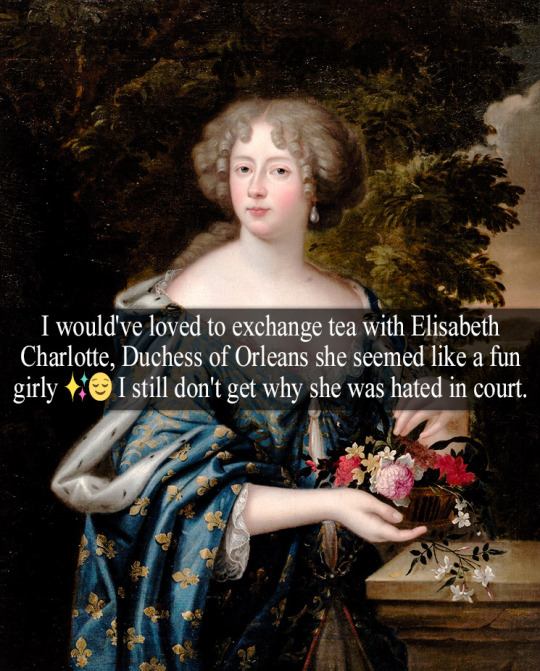
“I would've loved to exchange tea with Elisabeth Charlotte, Duchess of Orleans she seemed like a fun girly ✨😌 i still don't get why she was hated in court” - Submitted by kaiserrreich
10 notes
·
View notes
Photo




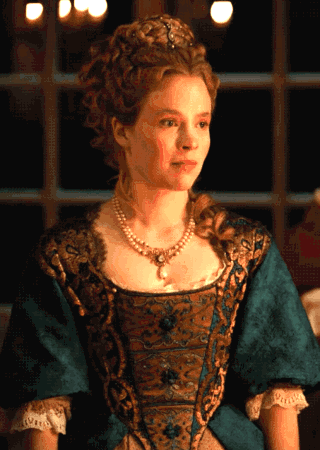

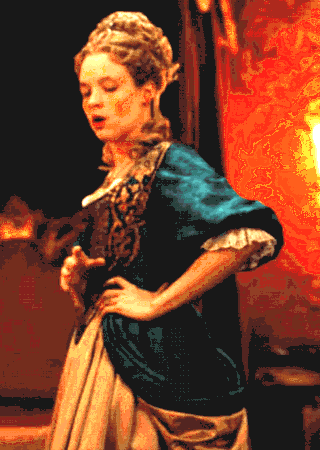


(Almost) Every Costume Per Episode + Princess Elizabeth Charlotte’s teal velvet bodice with gold print and gold skirts in 3x01,5,6,8,10
#Versailles#VersaillesEdit#VersaillesTV#perioddramaedit#weloveperioddrama#period drama#perioddrama#Princess Palatine#Liselotte#Elizabeth Charlotte#1600s#17th century#Smoke and Mirrors#The Afterlife#The Wheel of Fortune#Men and Gods#The Legacy#costumeedit#costumes#costume edit#costume drama#costume set#costume series#Almost Every Costume Per Episode#historical drama#Jessica Clark#Awkward-Sultana
116 notes
·
View notes
Text

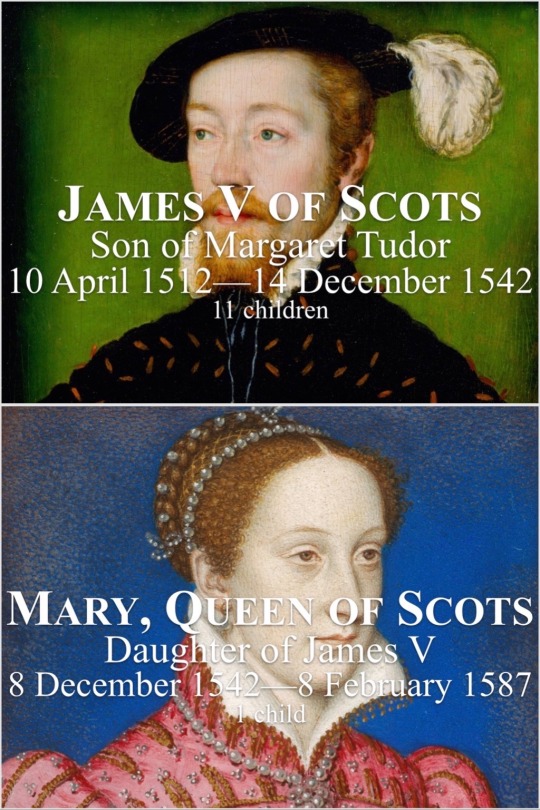

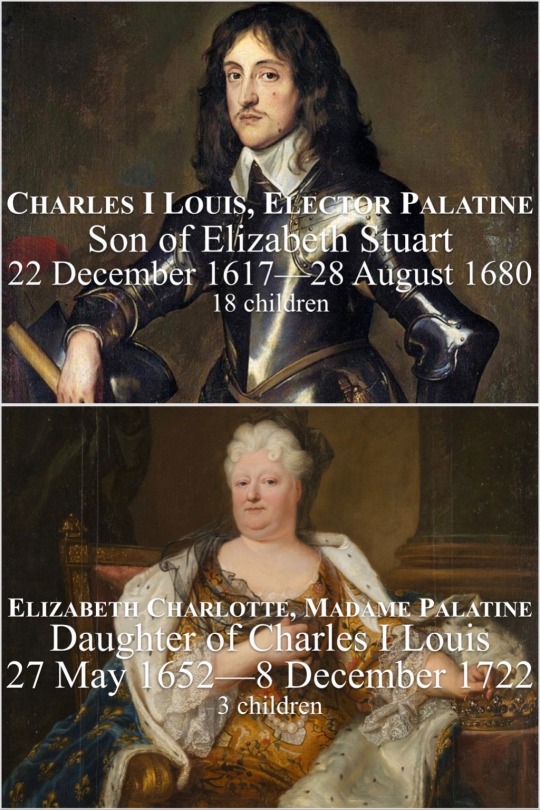


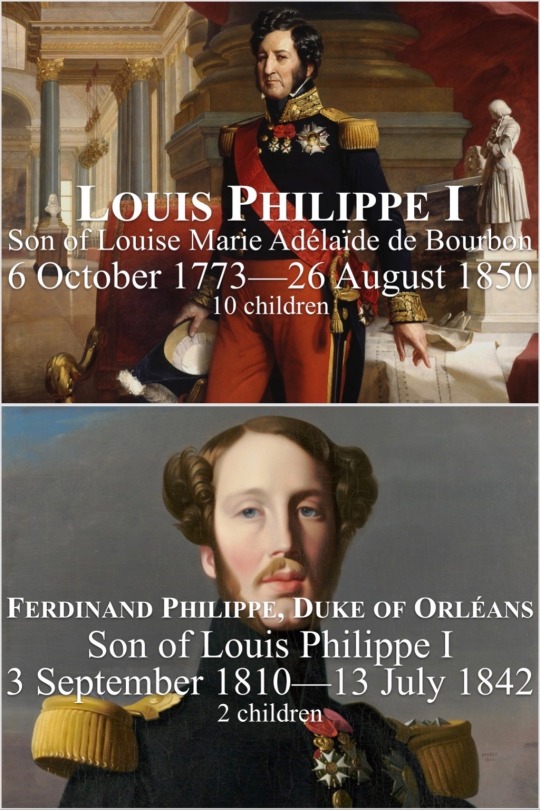
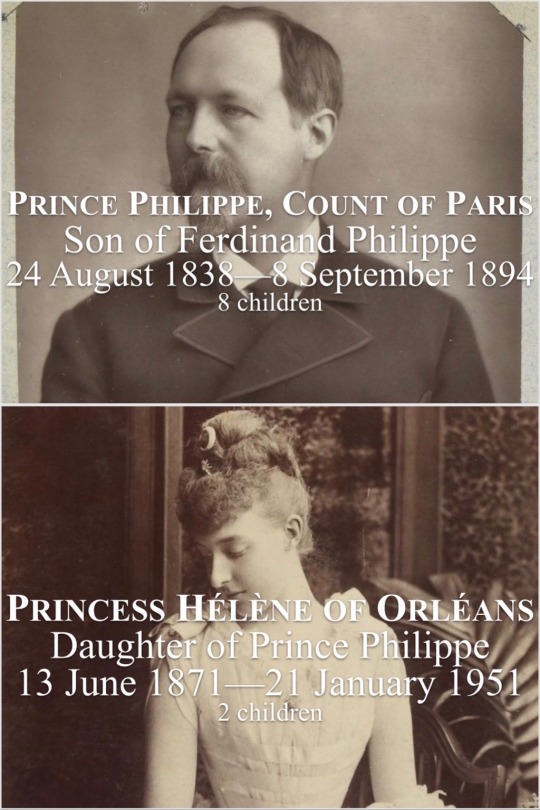


Descendants of the Tudors
#descendants of the tudors#henry vii#margaret tudor#james v#mary queen of scots#james vi and i#elizabeth stuart#charles i louis#elizabeth charlotte madame palatine#philippe ii duke of orléans#charlotte aglaé d’orléans#maria teresa felicitas d’este#louise marie adélaïde de bourbon#louis philippe i#ferdinand philippe duke of orléans#prince philippe#princess hélène of orléans#prince amedeo duke of aosta#margherita archduchess of austria este#archduchess maria beatrice#olympia princess napoléon
4 notes
·
View notes
Note
Hi, Duchess! I was wondering if you knew of any German royals who married French ones?
Marie Antoinette & Louis XVI, Philippe duc d'Orleans & Elizabeth Charlotte, Princess Palatine, Gerberga of Saxony & Louis IV, Matilda of Frisia & Henri I, Isabeau of Bavaria & Charles VI, Elizabeth of Austria and Charles IX, Marie Louise of of Austria and Napoleon
5 notes
·
View notes
Text
Elizabeth Charlotte, Madame Palatine.
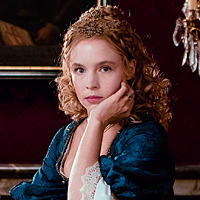
Daughter of an Arl. The only full blooded daughter between her father and his first wife, her mother. Her father would go on to discreetly divorce her mother and remarry, leaving Liselotte with a step-mother and 13 half siblings.
( "And everyone thought the Pollards were positively prolific!" she'd smartly say, leaving Red to laugh with no regrets. )
Her older and full brother is set to inherit every inch of responsibility but this does not mean Elizabeth Charlotte ( affectionately 'Liselotte', and even more so, 'Lissy' ) has sat still. She has always been ready to run with the men and reach for everything in her ladylike grasp, with good humor to match.
She shares relations to the Howards down the line ( the aunt of a cousin of a someone ) and did know Franklin and Charlie quite well. She was in full support of their horse business endeavors, helping to test out a mare or two ( at full gallop, riding with two feet in the stirrups and not sleekly in a side saddle ). Liselotte will tell you she was scolded for racing down boars with the boys, though she was never allowed to shoot anything. Charles Howard Sr acts as a freeholder for Liselotte's father.
Magic has been proven to bounce through their bloodline, mostly through her father's branch. Liselotte never showed any abilities.
2 notes
·
View notes